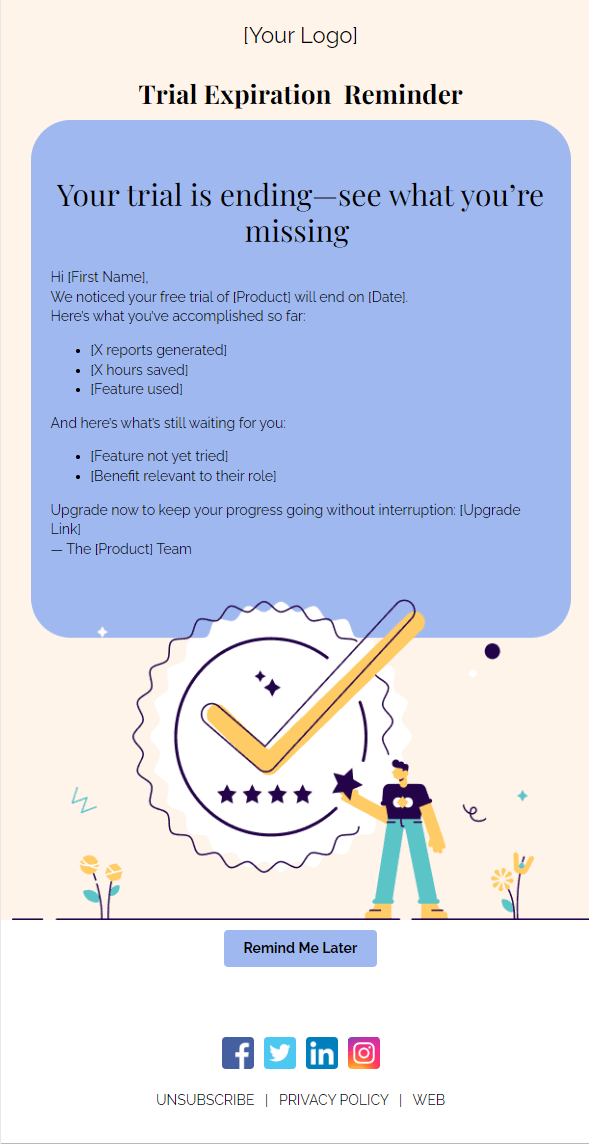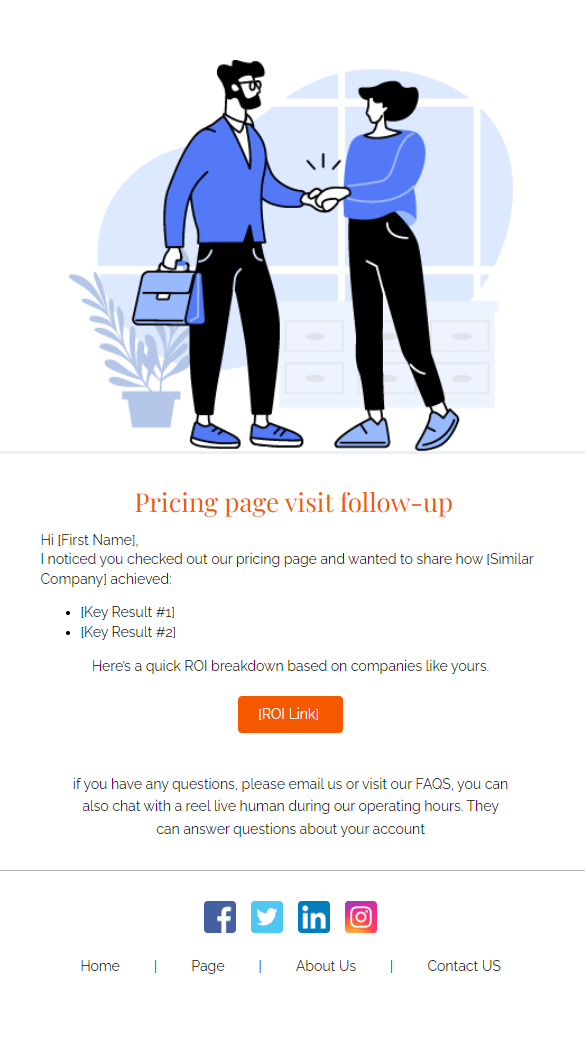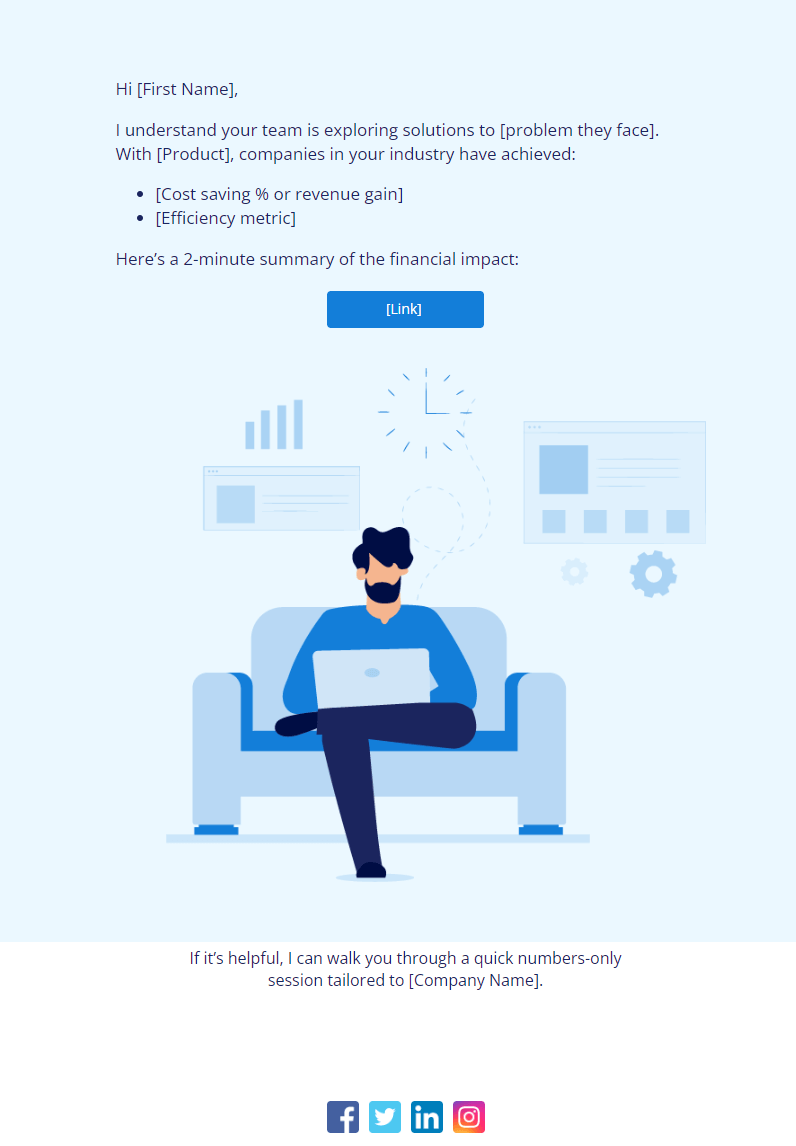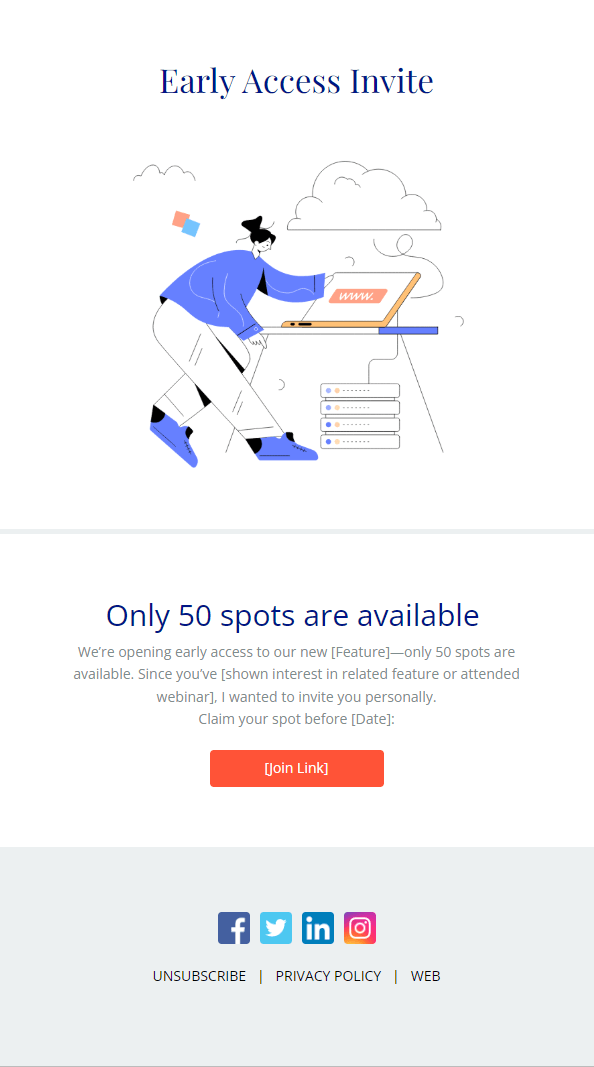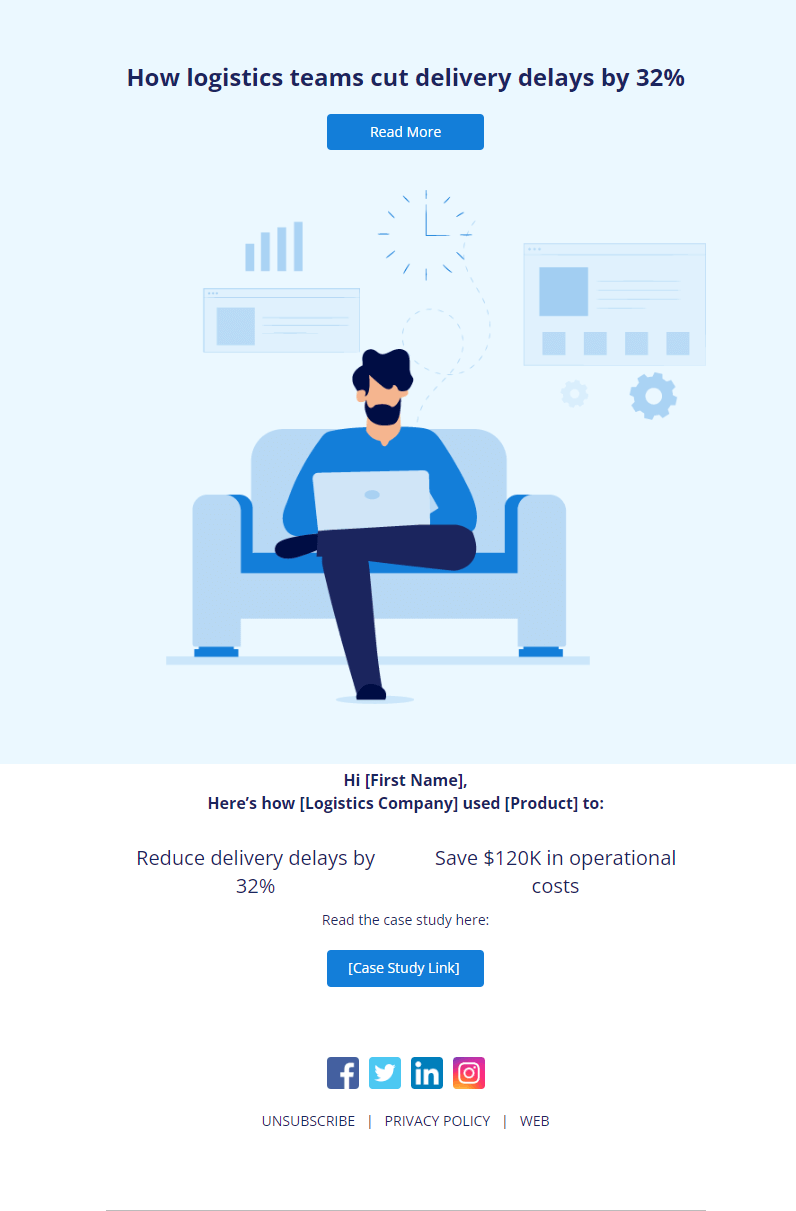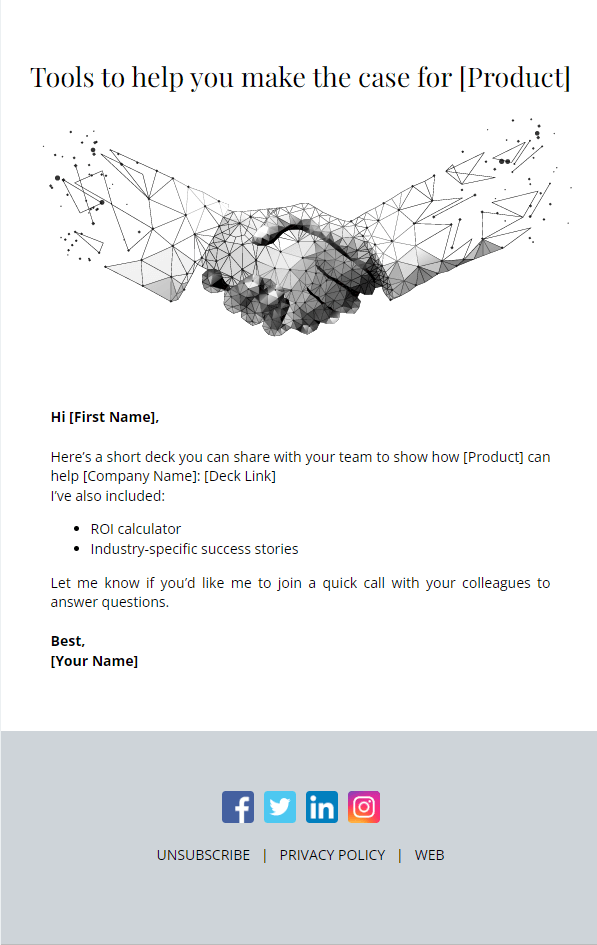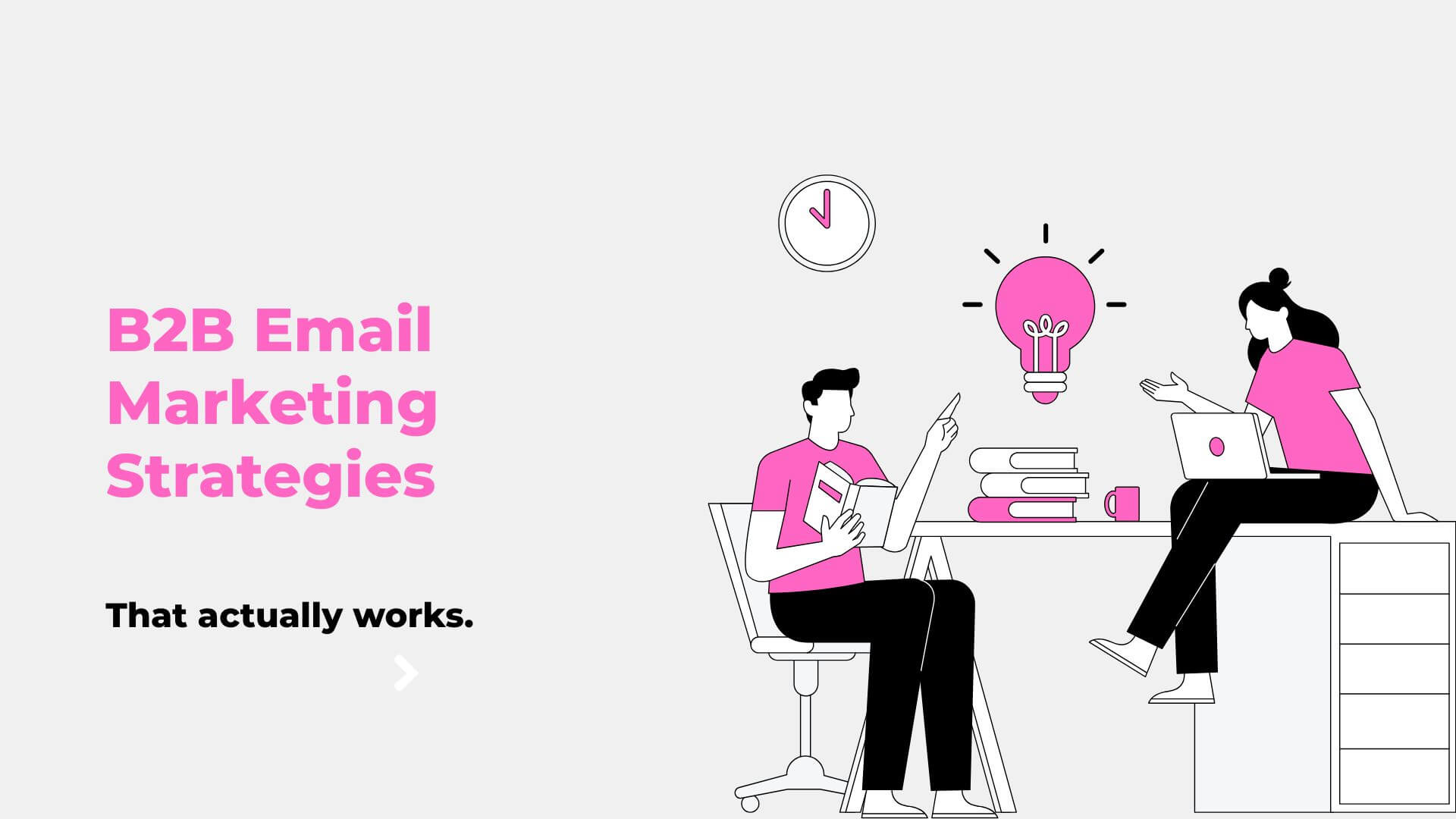
Introduction
In today’s crowded inboxes, B2B email marketing isn’t just about getting opened—it’s about delivering value quickly and moving decision-makers closer to action. Decision-makers don’t have the time or patience for “nice to know” emails anymore—they want actionable insights, timely updates, and solutions that address their specific pain points.
Your B2B email marketing strategies need to be precise, personalized, and performance-driven. The brands that win in B2B email marketing are the ones that treat every send as a strategic touchpoint.
This guide walks you through B2B email marketing best practices — ones that aligns with how professionals actually work, explore, and buy today. Each strategy here is grounded in practical examples, so you can see exactly how to move from theory to action—and turn your emails into a powerful, revenue-driving tool for your business.
1. Transactional Emails—A Hidden Marketing Opportunity
B2B transactional emails often get overlooked in B2B email marketing strategies—but they’re some of the most opened messages you’ll ever send. These are the emails your recipients are actually waiting for. They’re not just glancing at them; they’re opening them with intent. Answer unasked questions, and gently guide the next step in their journey. The trick is to be subtle—you don’t want to disrupt the main purpose of the email but rather enhance it. Used right, they can add value and push your audience toward action.
Welcome Emails: Go beyond the basic confirmation. Use this moment to introduce key features, share helpful resources, or link to a quick-start guide. You could also include a short customer success story to help them visualize what success looks like with your product.
Trial Expiration Reminders: Don’t just notify—highlight what they’ll miss out on if they don’t upgrade. This could include a personalised recap of what they’ve already accomplished with your product—number of reports generated, hours saved, or features used—and then show them what’s still left to unlock.
Password Reset Emails: It’s a small window, but you can still include a link to a high-value blog post, webinar, or case study.
Invoice Emails: Use this high-open-rate email to include a subtle call to action—like inviting them to an upcoming webinar, sharing a recent product update, or linking to a helpful resource. Including a friendly, relevant link like ‘Want to make the most of your subscription? Here’s how’ can truly add value and be appreciated.
Service Activation Emails: Use these emails to encourage wider adoption—add a referral link or offer a bonus for inviting teammates
Keep the main message front and centre, but make sure there’s always a secondary benefit that encourages further engagement.
2. Behaviour-based emails in b2b
Behavioural emails feel more relevant because they’re based on what someone actually did, not just who they are. They show your audience that you’re paying attention—that you’re not just sending generic promotions but responding to their specific actions.
For example, you can send targeted emails when someone:
- Visits your pricing page but doesn’t request a demo – you can follow up with a short ROI breakdown that addresses the questions they might be asking internally.
- Watches a product video on your site – Send them a short success story or video testimonial from a company in their industry so they can see the product in real-world use.
- Opens or clicks on one of your emails – Send a thoughtful follow-up that explores the topic they chose, showing you’re ready to take the conversation further.
- Forwards your email to a colleague (a strong sign of interest) – Offer a short, shareable PDF or deck they can circulate internally.
- Downloads a guide, checklist, or paper – Follow up with a practical ‘How to apply this’ email that helps turn their download into a clear, actionable plan they can use in the real world
- Signs up for a free trial but doesn’t start using the product – Send a quick-start tutorial or a short video showing the fastest way to get results
- Engages with certain content—then gets a related offer or resource. This way, you build momentum rather than letting the interest fade.
The more you connect your emails to actual user behaviour, the more natural and welcome they feel. It’s less “We’re marketing to you” and more “We noticed this might help you right now.
3. Account-Based Email Marketing (ABM)
Focus on high-value accounts; target the buying committee.
When you’re targeting high-value B2B accounts, a generic email won’t get the job done. That’s where Account-Based Marketing emails comes in—focusing on specific companies and tailoring your message for the key people involved in the decision.
Identify the decision-makers and influencers, then send each of them a message that speaks to their role and priorities.
Examples:
Send a feature-focused email to the technical lead who cares about how it works.
Share ROI numbers with the Chief Financial Officer, who needs to justify the cost.
Show use cases to the operations head who wants to know how it helps the team
These emails should read less like a mass send and more like a one-to-one note from a trusted advisor. Emails show that you’ve done your research and actually understand their business. It’s the opposite of a generic pitch—and this kind of targeted B2B email marketing is far more effective.
4. VIP-Only Emails for Interested-but-Hesitant Leads
In B2B, there’s always a segment of leads who are almost ready—but just haven’t taken the next step. A great way to nudge them forward is by making them feel like insiders. This approach works because people are naturally drawn to exclusivity—it creates both urgency and a sense of privilege.
Create a VIP-only segment and offer things like:
- Early access to upcoming features
- Invitations to join a private beta
- Exclusive content, bonuses, or onboarding help
Example: “We’re launching a private beta of our new feature—only 50 spots available. Want early access?”
This adds urgency and makes leads feel valued, which can be just the push they need to finally take action. For best results, personalize these offers—mention how the early access aligns with something they’ve shown interest in before.
5. Progressive Profiling Through Email
In B2B marketing, asking for too much information too soon can scare people off. Progressive profiling is a smarter approach—collect small bits of information over time, instead of all at once.
- Start with basic info: name, company, email.
- Then ask about the role, team size, and challenges in future emails.
- Use dynamic forms or in-email CTAs to gather this info without friction.
Progressive profiling lets you personalise better without overwhelming leads at the start. You also get more accurate data because you’re not forcing them to rush through a long form—they’re sharing details when they’re ready and interested.
6. Create Industry- or Use-Case-Specific Email Campaigns
Generic emails get ignored—especially in B2B. To really connect, tailor your message to specific industries or use cases your product solves.
Focus on real problems and outcomes that matter to them.
Example: See how logistics teams are using [Your Product] to reduce delivery delays.
Consider building small content “clusters” around each industry you target—case studies, quick tips, and success metrics that you can plug into your emails as needed. That way, you’re always ready with something specific and compelling.
When leads see real-world results they can relate to, they’re more likely to trust your solution—and take action.
7. Support Your Internal Contact.
In many companies you’re targeting, there’s often someone who already loves your product. Maybe they’ve tried your free trial, attended a webinar, or downloaded a guide. They want to bring your product into their company—they just need a little help getting others on board.
That’s where you come in.
Send them helpful, easy-to-share resources like:
- A short slide deck they can forward or present internally
- A business case or ROI calculator to make the financial argument
- Industry-specific examples they can relate to
- A simple one-pager that answers the “why this tool?” question
Keep supplying them with timely updates and proof points. They just need the right tools to make the case. When you support them with the right materials, you turn quiet fans into powerful advocates.
Conclusion
The most effective B2B email marketing strategies go beyond sending updates—they create meaningful touchpoints that guide decision-makers through every stage of the journey.
B2B email marketing strategies works best when they feel personal and purposeful. Your job isn’t to send more emails—it’s to send better ones. When each message feels like it was written for a real person, solving a real problem, you’re no longer just another unread subject line—you’re the email they’re glad they opened. The right message, sent at the right moment, can move a deal faster than weeks of calls. Focus on relevance, timing, and value—and your emails will do more than land in inboxes; they’ll drive decisions.
